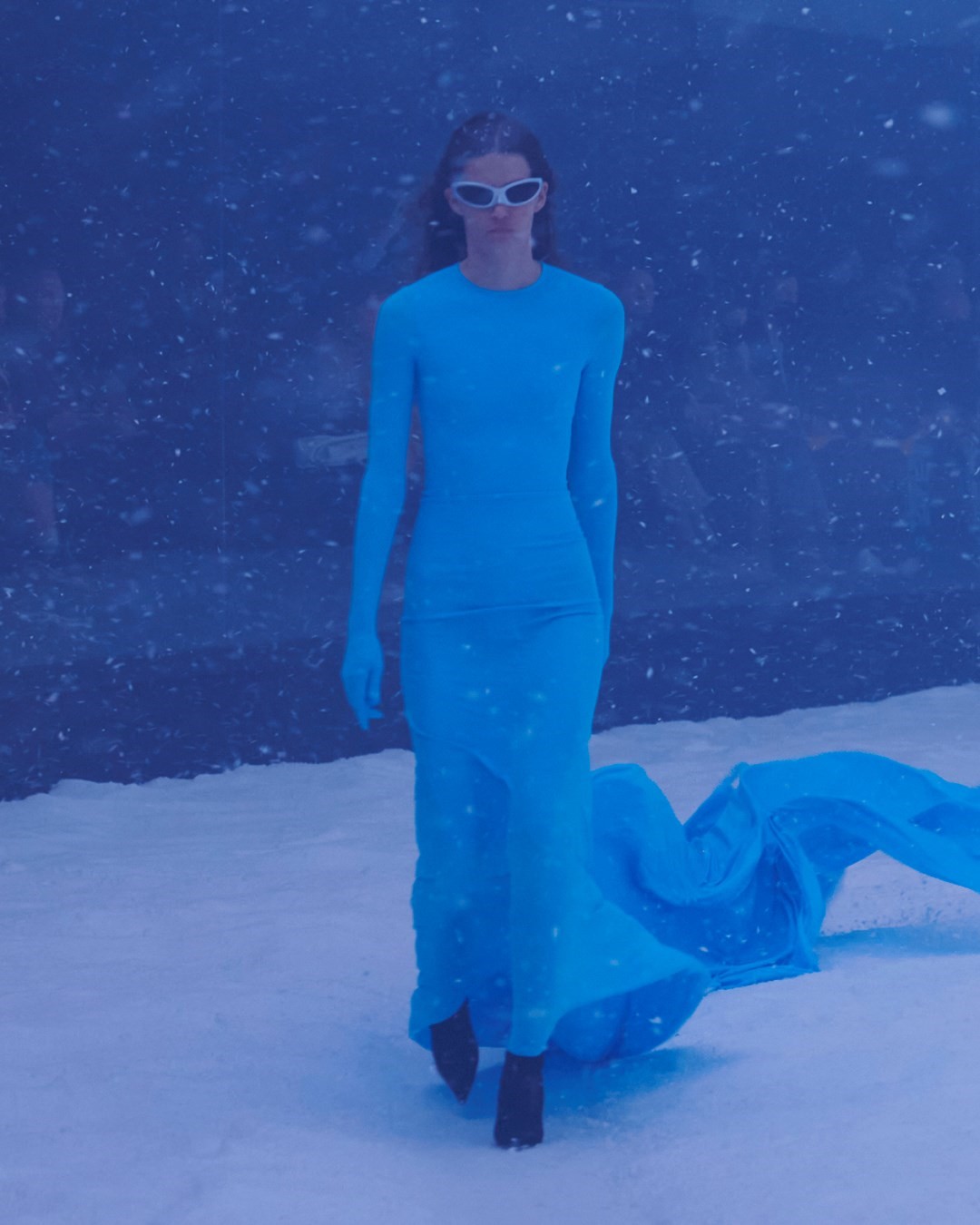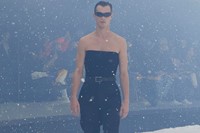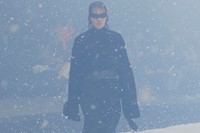Plenty of fashion designers aim to create worlds. A few achieve it, crafting wonderlands of decor and clothing that manage to evoke a fantasy powerful enough to erase what’s going on outside their respective realms. But it’s rare to find a designer who is able to accurately reflect the world in which we live through their clothes, especially when the world, at any given moment, can be a strange and frightening place.
The Autumn/Winter 2022 Balenciaga show was strange, and frightening. What it wasn’t, however, was a fantasy. It maybe began as one: backstage, Demna (professionally now known without his surname) explained that the root of his latest show was there two years ago. Remember that – the last Balenciaga show before the pandemic hit, when models walked on water beneath a falling fire-and-brimstone sky? “Biblical” was the word Demna used, and bar the acrid chemical stench in the air, it felt like a scene from the Book of Revelation. The intention was to evoke climate catastrophe – and shifting from that all-black space, the next would be all white, “infinite,” as Demna said. His team had been working on the idea for six months, ultimately erecting it in an aircraft hangar by the Aéroport de Paris-Le Bourget, the private jet airport. A pretty potent symbol for climate change, right there. That hangar became the stage for a man-made snowstorm, a blizzard eddying frantically around a circular chamber of glass, a column of endless white. And the models trudged their way through, in clothes engineered to dramatically underscore those adverse conditions. Evening gowns with trains whipped behind, flanks of cloth billowed, vast overcoats flapped, models pitched forwards in high heels, struggling against the headwind.
Of course, with the displacement of people from Ukraine across Europe over the past two weeks, those images have a new potent power. Rather than predicting a reality far in the future, they reflect the reality of right now. Demna was originally projecting some half-century forwards, when, he said, weather conditions may be such that snow doesn’t exist in the wild anymore. We were, therefore, in a kind of weather-zoo. “Maybe in 50 years, people will have to go to places to have an artificial experience of certain weather conditions that we take for granted, unfortunately,” he said. “My idea was to build this in-real-life experience that kind of mimics that virtual reality, but to show that real life is much more beautiful.”
The real-life images coming from Ukraine – albeit ones experienced virtually, through the internet, television and newspapers – recontextualised Demna’s show. His models, walking through howling gales to thrashing electronic music, were powerful reflections of real-life struggles. They are struggles Demna himself experienced as a teenager – he and his family lived in what is now the partially-recognised state of Abkhazia, on the eastern coast of the Black Sea. Then part of Georgia, in 1992-1993 a process of ethnic cleansing by Abkhaz separatists killed thousands, while a quarter of a million Georgians were expelled from their homes, including the Gvasalias. They travelled across mountains, first to Tbilisi and then to Düsseldorf in Germany, when Demna was 21.
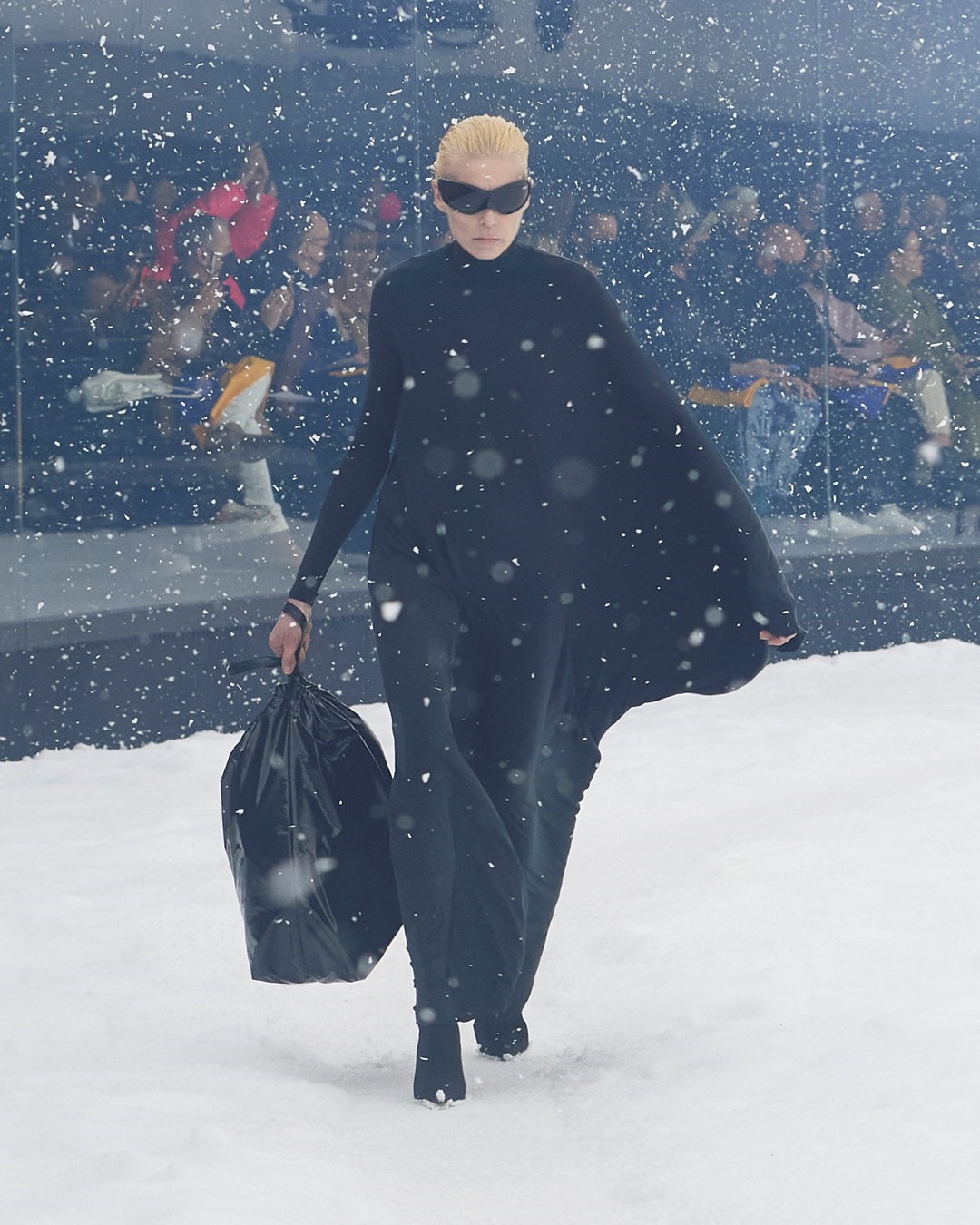
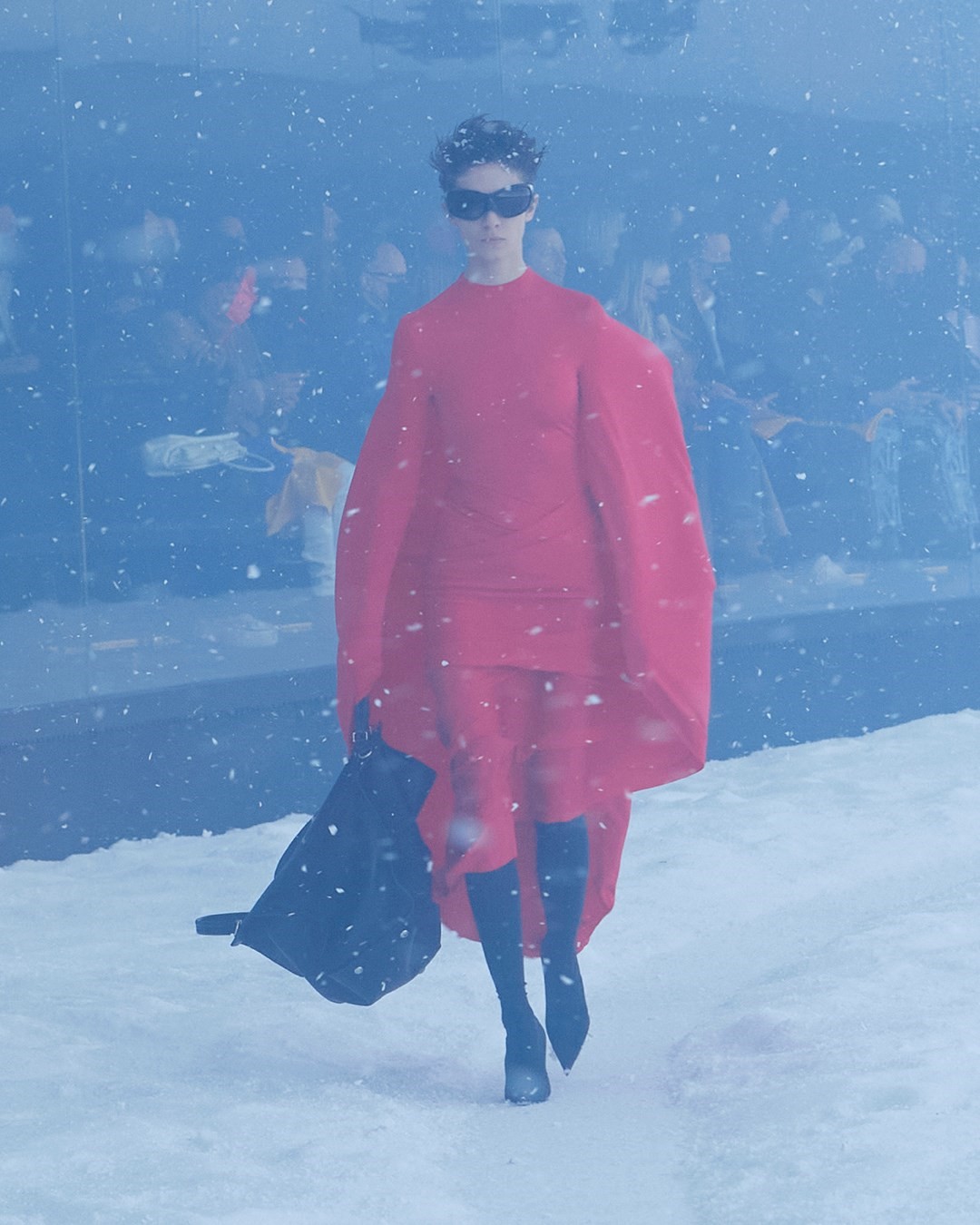
The experience, the designer states, was something that kept coming back to him watching the news over the week leading up to his show. And so he re-framed some of that narrative – he placed a T-shirt in the colours of the Ukrainian flag on every seat, and a note written by him. It opened with a painfully precise retelling of his own story. “The war in Ukraine has triggered the pain of a past trauma I have carried in me since 1993, when the same thing happened in my home country and I became a forever refugee. Forever, because that’s something that stays in you. The fear, the desperation, the realisation that no one wants you. But I also realised what really matters in life, the most important things, like life itself and human love and compassion.”
It was a potent message, one heartfelt and true – how could it not be, when you’ve been through that? Trauma is something that a handful of great fashion designers have used as creative inspiration for their work: Lee Alexander McQueen used his sister’s experience of domestic abuse as impetus to empower women; the great Black American designer Patrick Kelly reclaimed and reframed the racist iconography of Southern American states as empowering totems of his own African-American heritage. Demna was doing the same. It was also a remarkable example of a fashion show being repurposed, as a powerful communicative tool that was able to speak about something far bigger than just the clothes on someone’s back. Those can have deep meaning too, of course. But here, it was about the imagery generated by the show, its experience. Demna himself stated that, “in a time like this, fashion loses its relevance and its actual right to exist.” I’d argue the contrary – but certainly you question if and how fashion can reflect its time, and what fashion can do to help the situation, if anything.
Often, fashion is an escape in moments of hardship – and you can judge for yourself whether that’s a good or a bad thing. Christian Dior’s 1947 New Look was, perhaps, the ultimate example – in a bombed-out post-war France, malnourished and still rationed, Dior unleashed a fantasy of profligacy and wealth. Some women adored it; some rioted and tore the Dior clothes from the back of models in the street. Here, Demna utilised fashion as a mirror, but also as a projection towards the end the world desperately wants for the current situation. “It is a dedication to fearlessness, to resistance, and to the victory of love and peace,“ he wrote. Backstage, he was even more succinct. “The message is love, always.”
